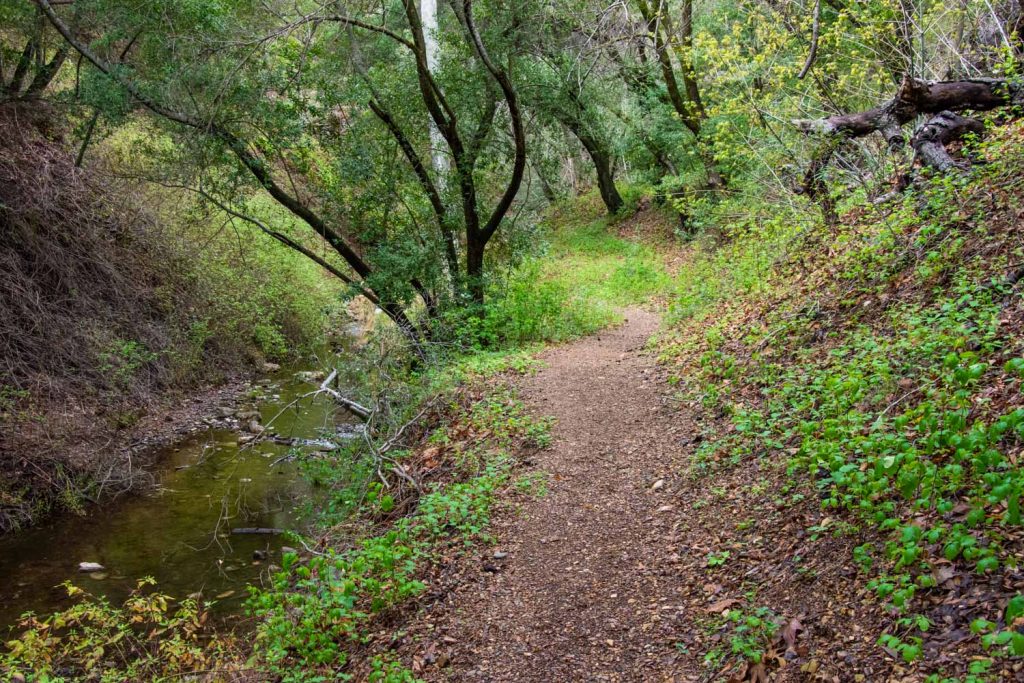
Batrachoseps minor
- Petitioned – Endangered Species Act
- Sensitive – U.S. Forest Service
- Species of Special Concern – California Department of Fish and Wildlife
- G1 Critically Imperiled – NatureServe (2015)
Description
The lesser slender salamander is a member of the Plethodontidae family, which includes species considered to be “lungless salamanders.” Salamanders of this family do not breathe through their lungs, rather they control respiration through their skin, as well as with the tissues lining their mouths. Because of their unique way of breathing, lesser slender salamanders must live in moist areas.
Their habitat typically covers moist areas, often above 1,300 feet, surrounded by mixed oak, tanbark oak, sycamore, and California bay laurel. The species is endemic to California and can only be found in the southern area of the Santa Lucia Mountain Range in San Luis Obispo County, mostly under rocks, logs, or humus. In the Los Padres National Forest, specimens found in the Cuesta Ridge Botanical Area have been tentatively assigned to this species.
The lesser slender salamander is the smallest of the slender salamanders, with the length of an adult being less than 3 inches. This salamander species is blackish brown, sometimes with a tan-pink dorsal stripe on its tail. The lesser slender salamander is recognizable mainly due to its larger head and feet, and distinctive toes. Its diet mainly consists of small invertebrates, caught with its projectile tongue.

Behavior
The lesser slender salamander limits its surface activity to favorable moisture and temperature conditions. This species is active above ground only during the rainy winter months, from November to April. However, reproduction occurs underground. These salamanders burrow in the ground and lay their eggs during the late fall and winter. Young salamanders are hatched terrestrially in the late winter and early spring, fully formed.
Conservation Issues
The lesser slender salamander is difficult to survey due to its small size and coexistence with more prevalent species. A similar species, the black-bellied slender salamander (Batrachoseps nigriventris) has an overlapping, yet broader range and habitat than the lesser slender salamander. The resemblance between the two species makes it difficult to survey and identify the current population size of the lesser slender salamander.
The lesser slender salamander’s coexistence with other similar species also contributes to habitat competition. This species is unable to excavate its own underground burrows, except within loose leaves and soil. This makes it difficult to maintain their habitat, as other species with similar habitat requirements may compete for these burrows.

Another threat that is prevalent to this species is development. Because this species is only found in only one small region, the lesser slender salamander is particularly vulnerable to habitat loss. As it likely occurs on and around West Cuesta Ridge area near San Luis Obispo, the increased visitation to the area and development of illegal trails, camping areas, and other habitat disturbance may be putting pressure on the species. ForestWatch is currently working to ensure that a new management and restoration plan for West Cuesta Ridge is developed in a way that will benefit lesser slender salamanders.
Because of the species’ vulnerability to habitat loss, the Center for Biological Diversity petitioned the U.S. Fish and Wildlife Service to list it as threatened or endangered in 2012. It is still under review.






